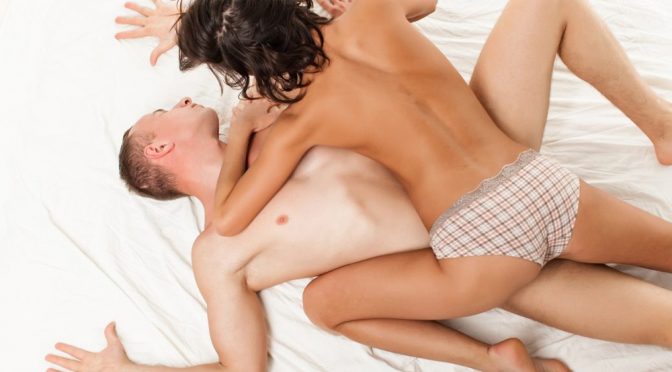Like a raw-boned Libyan, his taupe-colored complexion was over-exposed to Sebastian’s eyes, which were acclimated to the darkened interior. (Jonathan Malone: Invictus)
There are now a wide variety of color scales available online for naming skin tones. Unfortunately, these are not standardized. Everyone has a different idea – this becomes clear at the latest when you compare products for different skin types in a drugstore. It also doesn’t seem particularly helpful to me that English terms are increasingly being used in the cosmetics industry.
Subject to subjectivity, I’ll try to make a list here. If possible, I have compared the color tones on the website colors.findthedata.com. If I couldn’t find them there, I used the image search on Google with the keyword “color” to help me.
| HautFarbe | englische Bezeichnung | Definition | |
|---|---|---|---|
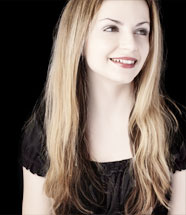 |
alabaster | A type of gypsum that resembles marble to some extent. Depending on where it is found, it can be white, light yellow, reddish, brown or gray. | |
|
“Her alabaster skin glowed from within, her long limbs seemingly endless.“ (Vina Jackson: 80 Days – The Color of Love: Volume 6) |
|||
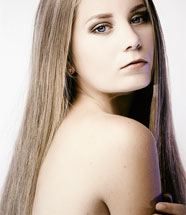 |
porcelain | Originally the name of a sea snail with a shiny white shell | |
|
“A woman of indeterminate age with skin like porcelain peered out.” (Dustin Thomason: Virus) |
|||
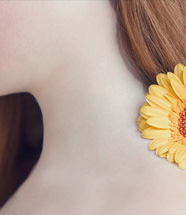 |
milk | Pale and luminous, like fresh cream. Smooth unblemished surface with a soft, pearlescent faint blue veins beneath. | |
|
“She did it slowly, allowing the light to creep up her bodice and settle gently between her breasts, where it transformed her perfect skin tone into milk.” (Celeste Bradley: The Beautiful Devil) |
|||
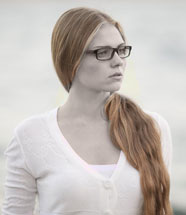 |
ivory | The tusks of elephants, a warm white with shades | |
|
“The ivory-colored tone gave her pale skin a bit of color, her neck seemed a few centimeters longer, and the top, which fit like a glove, hinted at curves where there were few.” (Milly Johnson: A Guy Doesn’t Make a Summer) |
|||
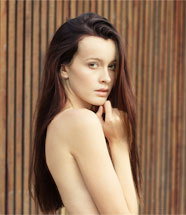 |
cream | A soft, pale ivory with warm undertones. This light complexion has a subtle yellow hue, appearing smooth and even. It’s lighter than beige but warmer than stark white. | |
|
“Delicate and almost doll-like, Sophia was wearing a midnight-blue evening dress that showed off her flawless cream-colored skin and intense blue eyes to great effect.“ (Lucinda Riley: The Lavender Garden) |
|||
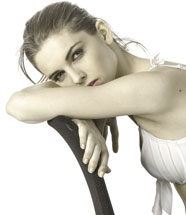 |
parchment | A pale, creamy off-white with subtle yellow undertones. This fair complexion resembles the smooth surface of writing paper, appearing delicate and translucent with visible underlying tones. | |
|
“Far from his moist gaze, my skin slowly became like parchment.” (Benoîte Groult: Salt on Our Skin) |
|||
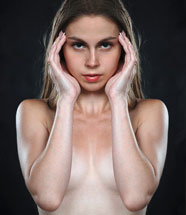 |
ruddy | A reddish-pink flush on fair to medium skin. This healthy-looking hue suggests increased blood flow, often appearing on cheeks, nose, or overall complexion due to exertion, weather, or emotion. | |
|
“Gilberte’s reddish skin was exactly like her father’s; when nature created this child, she apparently had the task of gradually recreating Mrs. Swann, having only Mr. Swann’s skin as matter.” (Marcel Proust: In the Shadow of Young Girls) |
|||
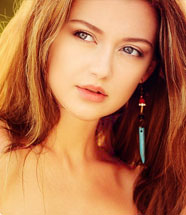 |
bisque | A light, warm beige with subtle peach undertones. This complexion resembles sun-kissed fair skin, falling between pale and medium tones in diverse human coloration. | |
|
“The rough fabric made Emily’s skin look even finer, like a doll made of the finest biscuit porcelain.” (Victoria vanZant: Midwinter Memories: The Legacy) |
|||
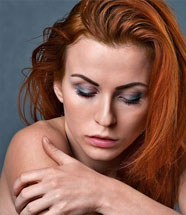 |
rose | A soft, romantic pink with a touch of red. It evokes the delicate petals of its namesake flower, blending warmth and femininity in a gentle, blushing hue. | |
|
“Her skin was pink, a pure, radiant pink, underlaid with a milky glow.” (Heiner Rank: The Powerlessness of the Almighty) |
|||
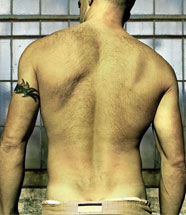 |
khaki | Warm, earthy tan with subtle olive undertones. Sun-kissed and neutral, reminiscent of desert sand. Smooth, even complexion with a natural, outdoorsy glow. Versatile hue between light and medium. | |
|
“At this point, the khaki-colored skin of Hals’s older brother Mario should also be mentioned, a strangely dead gray-green whose keratosis, together with the atrophic inward-curving arms and the arachnodactylism, gave him an almost eerie resemblance to a reptile or dinosaur, especially from a medium distance.” (David Foster Wallace: Infinite Jest) |
|||
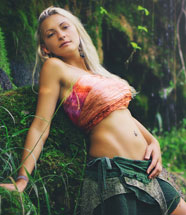 |
amber | A warm, golden-orange hue reminiscent of tree resin or honey. It glows with rich, translucent depth, evoking autumn sunlight and fossilized gemstones. | |
|
“Her skin was not of this world, it had the color of amber and was so transparent that a delicate network of blood vessels shimmered through it on the lighter inside of her arms.” (Karen Lord: The Best of the World) |
|||
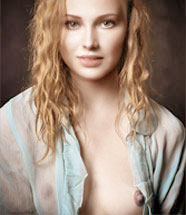 |
apricot | Soft, peachy-golden hue with a warm glow. Delicate blend of pale orange and pink undertones. Resembles the velvety skin of ripe apricots. Radiant and fresh, with a subtle sun-kissed appearance. | |
|
“A few cheeky freckles on her nose and cheeks accentuated her apricot-colored complexion and the reddish strands in her brunette hair.” (Sandra Brown: Glow Under the Skin) |
|||
 |
peach | Soft, delicate pink-orange hue, like ripe fruit flesh. Gentle warmth with rosy undertones. Smooth, velvety appearance reminiscent of flower petals. Evokes a fresh, youthful glow. | |
|
“No country girl, but God knows an Irish beauty – red hair, green eyes, skin like peach, a soft Dublin accent and the appropriate behavior.” (Morris L. West: The Red Wolf) |
|||
 |
coral | Vibrant, warm pinkish-orange hue. Lively and energetic, like tropical sea life. Radiant glow with a sun-flushed appearance. Balanced blend of pink and peachy undertones. | |
| “The higher the sun rose, the more transparent the picture appeared and the warmer Alphonsine’s skin shimmered. This effect would be seen in the entire picture. He asked her to assume the positions of all the figures, one after the other, and came across other places that needed a touch of coral red – Alphonse’s face, Raoul’s ear, Antonio’s cheekbones and Pierre’s nose and cheeks, which gave the whole picture a touch of warmth.” (Susan Vreeland: Sundays in the Light) | |||
 |
ginger | Pale, cool-toned complexion with pinkish undertones. Often freckled, with a tendency to flush easily. Porcelain-like quality, delicate and fair. Associated with red or auburn hair. | |
| “When she saw her unmistakable reddish brown skin, she realized why Cery had been so sure that Forlie was not the woman she had seen.” (Trudi Canavan: Sonea 1: The Guardian) | |||
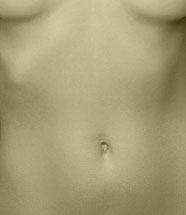 |
ecru | Ecru | Soft, creamy off-white with subtle yellow undertones. Warm and natural, like unbleached linen. Smooth, even complexion reminiscent of raw silk. Elegant and understated neutral tone. |
| “There’s the usual London mix of skin colors, ranging from ecru to burnt ebony.” (Liz Jensen: The ones that get there) | |||
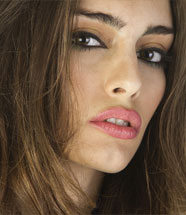 |
fawn | Soft, light brown with subtle grayish undertones. Delicate and earthy, like a young deer’s coat. Warm neutral tone with a gentle, natural appearance. Evokes a subtle sun-kissed glow. | |
| “I stare at my reflection in the coat rack. I bear no resemblance to my usual self. That’s because I’m covered from head to toe – that is, in all the places where skin shows, such as the neckline, sleeves, and below the glittery hem of the dress I’m wearing – in Nude Beige No. 105.” (Meg Cabot: No Chocolate Is Also Not the Solution) | |||
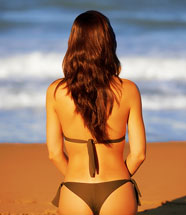 |
clay | Rich, earthy reddish-brown hue. Warm and grounded, like sun-baked terracotta. Deep, natural tone with russet undertones. Evokes rugged landscapes and ancient pottery. Robust yet refined. | |
| “Clay-colored, almost dirty, the sunken cheeks, plowed up by many years of suffering, thirsty and scorched, the cracked skin stretches with many cracks, from which that vampire of twenty years of infirmity was drained of blood and color.” (Stefan Zweig: The Face) | |||
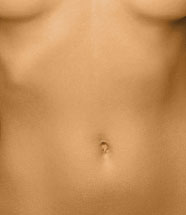 |
ochre | Warm, earthy yellow-brown tone. Rich and sun-soaked, like ancient cave paintings. Deep golden hue with subtle red undertones. Evokes sun-baked landscapes and historic pigments. | |
| “They both had the same high forehead, the same narrow nose, the same beautiful mouth that spoke of deprivation and poverty, the same ocher-colored skin, the same wrinkles, crow’s feet and lines on their faces, as great suffering and sorrow marked them.” (Johannes Mario Simmel: Nobody is an island) | |||
 |
honey | Honey skin glows with golden warmth, reminiscent of sunlit amber. Its rich, inviting hue radiates a gentle, captivating allure. | |
| “The Don, on the other hand, was a spoiled young man of classic Camorri stock, dark-haired and with a complexion like dark honey.“ (Scott Lynch: The Lies of Locke Lamora) | |||
 |
salmon | Salmon skin radiates soft pinkish hues, like a sunrise’s gentle blush. It exudes warmth and a delicate, inviting charm. | |
| “Between the hem of her coat and her knee socks, her bare skin glowed salmon.” (Keith Donohue: The Dark Angel) | |||
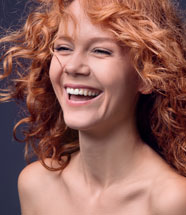 |
terra-cotta | Terra-cotta skin holds earthy, reddish-brown warmth, echoing sunbaked clay. It offers a natural, grounded essence with a serene, captivating depth. | |
| “Well, your skin really does have a bit of a terracotta complexion. It’s a wonder Laurence Llewellyn-Bowen, the packaging artist, hasn’t rolled you up on the wall as a sample yet.” (Cally Taylor: Sky kisses) | |||
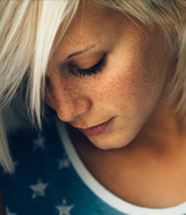 |
bronze | Bronze skin gleams with a sun-kissed glow, reflecting a rich metallic sheen. Its deep undertones exude warmth and a captivating, luminous allure. | |
| “The wind lifted the curtain a little, the wind came in, painting dark red shadows on the bronze skin.” (Kasimir Edschmid: The Agatha Ne balls) | |||
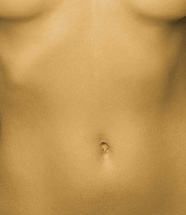 |
butterscotch | Butterscotch skin radiates creamy, golden-brown warmth, reminiscent of sweet caramel. Its soft, inviting glow exudes comfort and a gentle allure. | |
| “And Kim, who was standing in front of the damn car, Kim with the beautiful black hair and the butterscotch complexion, who looked like she came from Italy but actually came from Thuringia, which you could tell.” (Gregor Weber: No Forgiveness) | |||
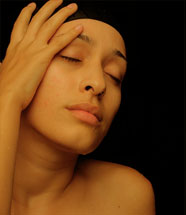 |
mordoré | Mordoré skin shimmers with a bronzed, sunlit glow, exuding rich warmth. Its deep, golden undertones create a captivating, sun-kissed allure. | |
| “When Anna moved, you saw nothing but bare, mordoré skin, which justified the assumption that the wearer’s pretty breasts needed no support.” (Hanna Molden: Kurakin) | |||
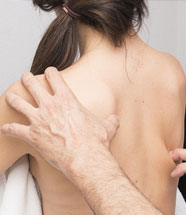 |
praline | Praline skin radiates with soft, nutty brown hues, exuding a warm, inviting charm. Its gentle undertones offer a cozy and captivating allure. | |
| “The even-tempered woman with wild, curly, shoulder-length dark-copper brown hair and praline skin tone smiled with the nod of her head.” (LaToya Lawrence: Inherent: The Birthright) | |||
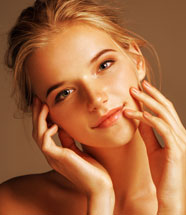 |
tawny | Tawny skin glows with warm, golden-brown hues, radiating an earthy elegance. Its natural undertones evoke a grounded and enchanting allure. | |
| “The Contessina’s huge eyes, widened even further by the snow-white complexion, did not leave her Dario, whom she no longer recognized; for his face was earthy, his skin tawny and wrinkled like that of an old man.” (Emile Zola: Rome) | |||
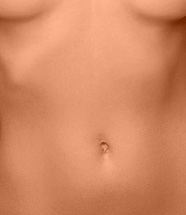 |
toffee | Toffee skin exudes rich, caramel-brown hues, unveiling smooth, sweet undertones. Its warm glow offers a comforting and irresistible allure. | |
| “The new man was scrawny, his skin the color of toffee – the smoothest skin Ivy had ever seen on a man – and he looked like he was sixteen.“ (Peter Abrahams: Ripped) | |||
 |
sorrel | Sorrel skin whispers with reddish-brown hues, offering warm, earthy undertones. Its natural glow suggests a rustic and enchanting beauty. | |
| “Huddled there, beneath his sorrel skin, Nisel kept counting the cars: four now! (Leslie Epstein: King of the Jews) | |||
 |
copper | Copper skin glows with vibrant, metallic reddish-brown hues, radiating warmth and elegance. Its lustrous undertones exude a fiery and captivating allure. | |
| “The Indian in her face was more pronounced. Her high cheekbones were more angular, her hooked nose more pointed, and her copper-red skin was lighter than usual. Her faded calico dress was open to her waist, exposing her broad, bronze-colored chest.” (Margaret Mitchell: Gone with the Wind) | |||
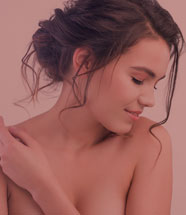 |
redwood | Redwood skin captivates with deep, rich reddish-brown hues, exuding warm, earthy undertones. Its natural allure suggests a timeless and rooted elegance. | |
| “Sister Glenda, who was in her seventies and had skin like redwood, pretended to be angry with us.“ (Dave Eggers: You’ll see how fast we are) | |||
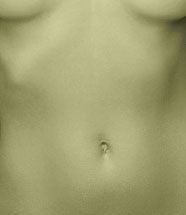 |
olive | Olive skin dances with balanced, greenish-brown hues, revealing warm, neutral undertones. Its serene glow evokes a natural, harmonious allure. | |
| “His dark hair was well-cut, his skin tinted olive. An observer would have described him as an Arab.” (Emily Benedek: The Last Plague) | |||
 |
cinnamon | Cinnamon skin enchants with warm, spicy brown hues, unveiling rich, inviting undertones. Its cozy glow offers a touch of exotic and comforting allure. | |
| “I, Jacques Laverande, of rather a solitary temperament: hair, eyes and beard are dark like lignite, as if I had grown up in Mauritania, skin the color of cinnamon, the nose of a predatory pirate…” (Joseph-Henry Rosny Aîné: The Voyage Through Infinity) | |||
 |
russet | Russet skin radiates with deep, reddish-brown hues, embracing warm, earthy undertones. Its vibrant essence reveals a bold and naturally grounded allure. | |
| “She had barely gone out when Schemeikka came and, without noticing her, slowly walked towards the yard, his russet skin steaming in the cool evening air – tall, slender, well-built – and Marja couldn’t take her eyes off him until Juha, stooped over, with a long back and short legs, pushed out of the door and, limping more than usual, hurried after him.” (Juhani Aho: Heavy Blood) | |||
 |
chocolate | Schokolade | Chocolate skin mesmerizes with rich, deep brown hues, unveiling smooth, velvety undertones. It graces many regions, notably Africa and the Caribbean, reflecting diverse ethnic backgrounds. |
| “However, throughout the evening, I had been unable to determine whether the boy with the chocolate skin and dangerous blue eyes returned my feelings, and this threatened to develop into a fresh complex called ‘fear of failure’.” (Natalka Sniadanko: Collection of Passions) | |||
 |
coffee | Coffee skin captivates with rich, medium to dark brown hues. Found in Latin America and South Asia, it reflects diverse ethnic tapestries and cultural depth. | |
| “Just so you know: I have brown skin. Dark brown. You could also say coffee brown, which of course in this city of a thousand coffee houses needs to be formulated a bit more precisely: Depending on the daylight and my mood, my beautiful complexion appears lighter or darker, usually shimmering in a fine melange brown in the morning, turning a darker or lighter brownish brown at noon, changing to an elegant single-cup brown in the afternoon, and finally landing in the evening – waiter, the check, please – in a rich espresso or mocha brown.” (Martin Horváth: Mohr im Hemd oder Wie ich auszog, die Welt zu retten) | |||
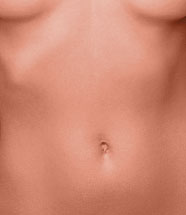 |
burnt sienna | Burnt sienna skin glows with warm, reddish-brown hues. Originally located in the Middle East and North Africa. | |
|
“Tania is also a fever – les voies urinaires, Café de la Liberté (…), sienna-brown breasts, thick garters…” (Henry Miller: Tropic of Cancer) |
|||
| sable | Sable skin enchants with its deep, dark brown hues. Originally located in Sub-Saharan Africa. Skin tone of the enslaved laborer in high register language, as often used in American poetry of the 18th century. | ||
| “Haply ye scorn: I thank thee Gracious God! That I do feel upon my cheek the glow Of indignation, when beneath the rod A sable brother writhes in silent woe.” (Robert Southey: Sonnet III) |
|||
| bay | Bay skin glows with warm, reddish-brown hues. Originally located in the Caribbean. The color name harks back to equestrian terms, often appearing in literature to evoke a sense of earthy elegance and vitality. | ||
| “His bay face and strong limbs relaxed, he steered his cart with an unusual relaxed posture for this area, a pipe in his mouth.” (Lion Feuchtwanger: Success) | |||
| sepia | Sepia skin radiates with rich, brownish-red hues. Originally located in Southern Europe. The name derives from the ink of the cuttlefish, famously used in art to convey warmth and nostalgia. | ||
| “She spoke with the earnest flat accent still common in the midwest, had smooth sepia skin, eyelashes a giraffe would envy, and matte-black hair that made her white lab look like it was lit from within.” (Pete O’Donnell: Death in the Diamond Lane) | |||
| chestnut | Chestnut skin glows with warm, reddish-brown hues. Originally located in Central Asia. The name originates from the chestnut tree, often celebrated in literature for its warmth and resilience. | ||
| “When he sat her into the bath, her eyes opened momentarily but only long enough to grasp her surroundings and smile at her lover. Kodi washed with ever increasingly larger circles her chestnut skin until once again she entered nirvana.” (DB Martin: South of Cancer, North of Capricorn) | |||
| hazelnut | Hazelnut skin enchants with soft, light brown hues. Originally located in the Mediterranean, it reflects diverse ethnic origins. The name comes from the hazelnut, often cherished in culinary arts for its warmth and subtlety. | ||
| “With the lily-white dress pressed next to her hazelnut skin, Serena had to admit she had never looked better.” (Taslim Burkowicz: The Desirable Sister) | |||
| currant | Currant-colored skin could be described as a very deep, dark red with a hint of a purple undertone, similar to the color of ripe black currants. This shade would rarely occur in reality and could be used metaphorically to describe a fascinating or unusual skin color. It could suggest that the person has deeply pigmented, dark skin with a cool or reddish undertone, but this could only be poetically applied to ethnic groups or regions without directly indicating a specific geographical origin. | ||
| She sat by the window, bathed in the soft autumn light. Her currant-colored skin shimmered delicately, her high cheekbones and thin lips suggested an Eastern European heritage. Yet something about her eluded certainty – a secret lurking between the shadows of her eyes and the quiet smile. | |||
| sallow | Yellowish, unhealthy-looking pallor. Dull and lackluster, lacking vitality. Often associated with illness or fatigue. Pale with greenish-yellow undertones. Suggests poor circulation or jaundice. | ||
| “Then his sallow face brightened, for the hall had been carefully furnished, and was very clean.” (from: Mrs. Belloc Lowndes, The Lodger) | |||
| taupe | The skin tone taupe can be described as a soft, neutral gray-brown that contains a subtle blend of beige and gray tones. It is a subdued, earthy shade that is neither too warm nor too cool. Taupe often has a slightly smoky or ashy look and has a calm, understated elegance. In terms of skin, this shade could indicate a pale to medium skin color, possibly with a cool or slightly olive undertone. | ||
| “Like a raw-boned Libyan, his taupe-colored complexion was over-exposed to Sebastian’s eyes, which were acclimated to the darkened interior.” (from Jonathan Malone, Invictus) | |||
| mahogany | Mahogany skin glows with rich, reddish-brown hues. People with this skin color were originally located in West Africa. Their complexion is luxurious and warm, like polished tropical wood. Robust complexion with subtle red undertones. Evokes strength and elegance. Deep, earthy glow. | ||
| “You could see her every curve, her lips protruded from her face while her mahogany brown skin glistened with sweat.”(from: Speedy L. Brown, Mahogany’s Blues) | |||
| bistre | The skin tone bistre is a deep, dark brown with a slight yellow or grey undertone. It has a certain warmth, but with an earthy, almost ashy character. The color is reminiscent of dark, burnt sepia or dried ink. In terms of skin color, “bistre” would describe a rich, deep brown complexion that may have slight olive or yellowish undertones, giving it a unique depth and earthy, natural tone. | ||
| “She was slender, had a shapely waist, her skin was a little bistre, but a beautiful bistre like that of Andalusian women…” (from: Prosper Mérimée, Carmen) | |||
| ebony | Ebony skin captivates with deep, dark brown to black hues. Originally located in Sub-Saharan Africa, it embodies diverse ethnic backgrounds. The name comes from the ebony wood, celebrated in art for its elegance and profound depth. | ||
| “Joclyn spoke this time. She was a wonderfully tall and elegant woman with skin a pale contrast to her husband’s ebony tone.” (from: Ragan Lynn Wilson, Lost Stars) | |||

